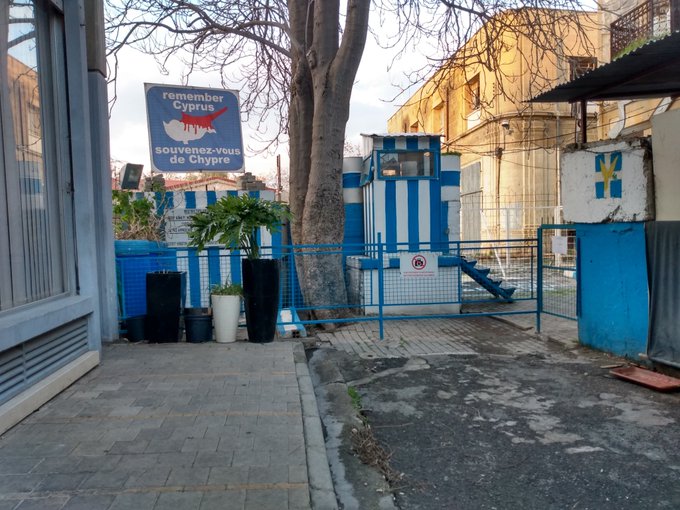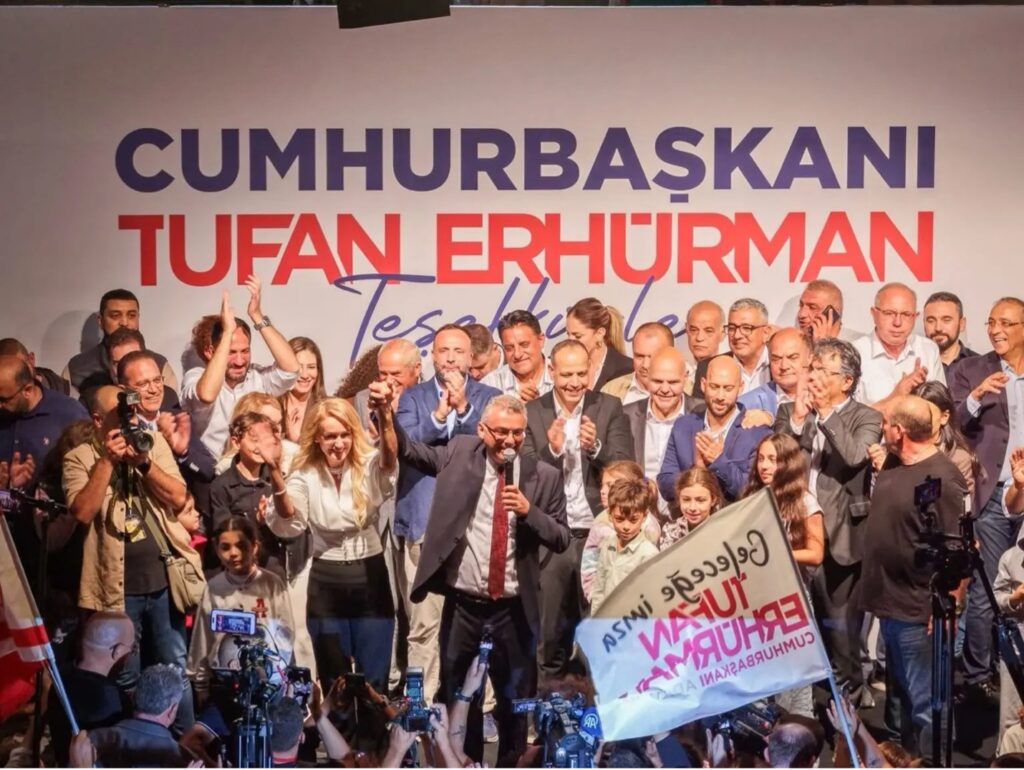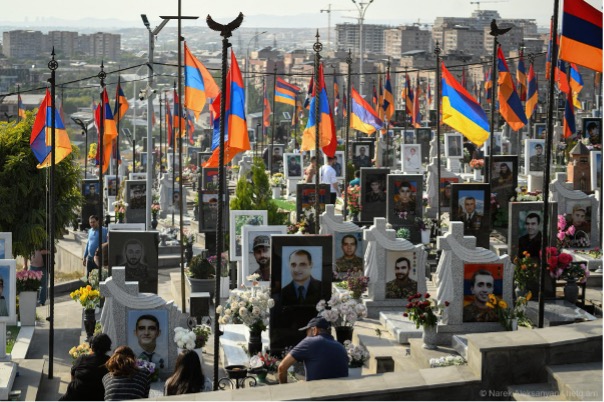Notes from Cyprus: Observing the Known, Learning from Unknown
It was August 30th, 1994. After only having spent three days in Cyprus I already figured out that although traffic signs might direct you to Famagusta, the place itself remained unreachable due to the Turkish military, already stationed there for the last 20 years. Only binoculars in Deryneia’s four-story watch-tower could offer an unforgettable view to the ghost town of Varosha, once a famous holiday resort, which had become a heavily guarded no-go-area right next to Famagusta. At that moment, I realised that beyond the „no-man’s-land”, a UN buffer zone, which separates the two conflicting parties, two political entities operate – the (de jure) Republic of Cyprus, controlled by Greek Cypriots, and the (de facto) Turkish Republic of Northern Cyprus, controlled by Turkish Cypriots.
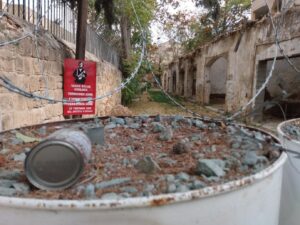
Image: Buffer zone (dead zone for Greek Cypriots, forbidden zone for Turkish Cypriots) in Nicosia dates back to 1974 to separate the conflict parties. (Source: Eiki Berg)
Yes, there are two of them. The major difference being that the former is recognized by the international community and the latter represents an outlaw rebellious entity (or area under the Turkish occupation) for the rest of the world. Interestingly enough, despite having international recognition, the Republic of Cyprus has a domestic legitimacy deficit: parts of the 1960 constitution were not applicable in 1963, just eleven years before the Turkish invasion of the island. At the same time, the de facto state in the north is very much seen as legitimate by the Turkish Cypriot population. The binoculars have only been able to reveal so much to my investigative eyes. The follow-up observation took me to North Nicosia. I passed the Ledra Palace check-point and promised to return by 5 PM on the same day while keeping in mind that failing to do so may lead to re-routing my trip back to Ayia Napa via Istanbul, Athens, and Larnaca…
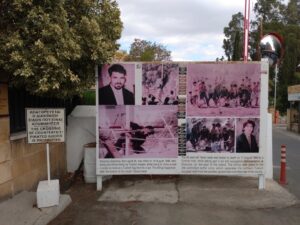
Image: The two incidents from August 1996 reminding the public of the ethnic violence, at the crossing in Nicosia. (Source: Eiki Berg)
During the next 27 years I repeatedly visited Cyprus. I established academic contacts both in the island’s south and north, carried out surveys, organized field trips for my students, met with high-ranking communal leaders – Tassos Papadopoulos, Demetris Christophias, Mehmet Ali Talat, Mustafa Akıncı – made friends with both Greek and Turkish Cypriots and published work on the Cyprus conflict. I thought I knew every small detail of why there was a conflict and what makes this intractable, despite international efforts and local grass-root level peace-building initiatives. I thought I had a solid grasp of what the country, its contested places, and struggling people are all about. But I was mistaken. There was much more to discover, especially things that remained hidden to most inattentive observers. No matter how much time passes, the conflict and its consequences still exist. The “we don’t forget” sticker on the traffic sign below is tribute to that.
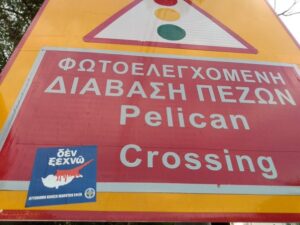
Image: “We don’t forget” symbol (by Nikos Dimou) on a sticker printed by a Cypriot student organization operating in Greece. (Source: Eiki Berg)
On November 6th, 2021 I returned to Cyprus, this time for three months. Varosha was partly opened, starting from October 8th, 2020. Thus, there was no longer a need for a binocular to grasp the visual evidence of the 1974 tragedy. I had a strange feeling while walking along Dimokritas Avenue; I didn’t want to be in the shoes of Greek Cypriots. To see the streets overgrown with vegetation or to have a glimpse of looted and desolated buildings that used to make up the number-one tourist destination in Cyprus in the early 1970s, hosting celebrities such as Elizabeth Taylor, Richard Burton, Raquel Welch, and Brigitte Bardot. Varosha’s Greek Cypriot inhabitants fled to the south when the city of Famagusta came under Turkish control. Like a modern-day Salamis, it has remained abandoned ever since – lost in despair and pain. With almost no hope to return as the opening of Varosha has downgraded its status as an object of exchange. Instead, it has become a weird theme park, entertaining all sorts of crowds: families with small children, adventurous tourists, Turkish soldiers dressed as civilians.
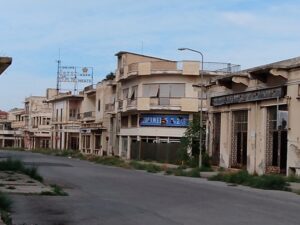
Image: Varosha, the glory of the past. (Source: Eiki Berg)
On the other side of the Green Line, Deryneia, the closest site to the Varosha ghost town, has got a refurbished Cultural Centre of Occupied Famagusta “to host the anti-occupation events, to look at our beloved city and almost all our occupied land from a distance, to stream video-films about Famagusta, and to host pupils of primary and secondary schools in their educational trips”. Just as it was back in 1994. Despite the major winds of change affecting the country since 2003 when the Green Line was unilaterally opened for crossings by the Turkish Cypriots, and the 2004 referendum on the Annan Plan which received the approval of 65% of Turkish Cypriot voters, Greek Cypriots are still very much stuck in the “do not forget” mindset, as if nothing has happened in the meantime. I knew that healing wounds takes time but I was not prepared to see almost no changes that otherwise would have put conflict resolution into a different perspective.
I knew about Pyla village in the buffer zone due to Yiannis Papadakis’ fabulous book on Echoes from the Dead Zone. I had also watched a documentary based on his ethnographic research in this bi-communal village, which shows kafeneio Makedonia facing Pile Türkkahvehanesi at the village square. This is a village where Greek and Turkish primary schools are located just 350 metres away from each other. Somewhat surprising bit of information for me personally was that another village of Troulloi, just 12km to the west, is located within the buffer zone. It looks like a piece of Greece being cut off from the motherland and transplanted into the zone of contagion. Allegedly, when internally displaced Greek Cypriots started moving to Troulloi from the north in 1974, anyone who was not deemed as a sufficiently nationalist, was not granted residence in the village. As a result, “less patriotic” people had to move on and settle on the neighbouring fields, which is now the (much bigger) village of Leivadia, literally translating to ‘fields’ in Greek.
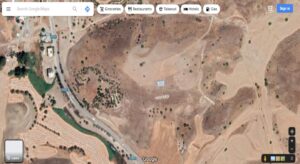
Image: Troulloi satellite image. (Source: Google Maps)
I knew about the gigantic TRNC flag on the mountain side, which Rebecca Bryant and Mete Hatay called a “successful failure” in their book on Sovereignty Suspended. Size matters indeed, and these 1.0625 sq km can be seen as both a “successful” reminder of the unresolved Cyprus problem and, at the same time, a “failed” attempt to make the TRNC more real than it currently is – largely unrecognized and within the embrace of Turkey. What I did not know before was the fact (presented in a documentary) that several mountain sides in the Troodos range bare large script of ENOSIS (unification in Greek). These were done by EOKA guerilla fighters to convey their message to the rest of the world in the end of 1950s until the first half of 1970s. And these are still there today… Likewise, seeing the display of the Greek flag, again on the hill side at the “doorsteps” to the village of Troulloi, made me think about the path-dependency that Cypriot people have fallen into while digging in the “ethnonationalist dirt”.
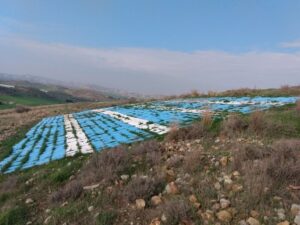
Image: The Greek flag on one of the hill sides in Troulloi (Source: Eiki Berg)
A Kemalist slogan “Ne mutlu Türküm diyene!” (How happy is the one who says I am a Turk!) on the north of the island has the same function in determining belongingness as constant efforts do to emphasize Greekness in the south. I knew how important symbolism is, artefacts and paraphernalia that links these people to their respective motherlands. To the extent that blue and white colored tavernas with (only) Greek flags on their front door offered the best cuisine for foodies and the worst venue for peacebuilders. But I did not know that Cypriotness is reflected also in colors – white, sand brown and green –, and usually non-flags, thus inviting common people (Hoi polloi in Greek) from both sides to exchange their views on federated governance of their island over the cup of Cypriot (not Turkish or Greek) coffee.
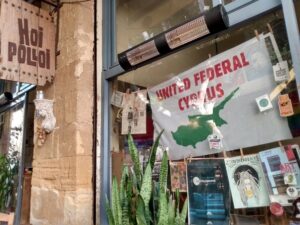
Image: Cafeteria Hoi Polloi (common people in Greek) in North Nicosia. (Source: Eiki Berg)
I was very much aware of the intensified cross-border movements between the Republic of Cyprus and the “occupied territories”. There are Turkish Cypriots working in the south and Greek Cypriots shopping in the north. There is even the English School designed to be bi-communal, hosting both Greek and Turkish Cypriot pupils. What I did not know was the fact that despite the flow of people, the people-to-people interactions still had not developed much further than those taking place in the safely-located Home for Cooperation in the buffer zone. I also couldn’t imagine just how little effect the open border would have on people’s mindsets, and how comfortable the division of the island has become for Greek Cypriots, even for the most die-hard Greek nationalists. Similar trends prevail in the north where the “two-state” rhetoric reflects hopelessness with the situation and discourages pro-solution activists to join forces with like-minded people in the south.
Last but not least, I knew that people living in conflict zones tend to see their own conflict as unique, nothing comparable with others. Thus, it should not come as a surprise that every single person in Cyprus has an opinion on their common problem, and most think that everyone else should back off and watch them struggling from a distance. What I did not know about was the grounded belief in self-censorship and conscious avoidance of moving the debate from an everyday level to a more sophisticated and nuanced level of articulation. My biggest surprise was that it was difficult to find a special course (related to peace and conflict studies) which also covers Cyprus conflict. Maybe it is because it might challenge the official discourse, or cause public outcry (students’ parents may question the curriculum), or be self-censored (people avoid teaching controversial things if it could put their job in danger). This does not mean that there is no trained scholarship in this field. On the contrary, new knowledge is produced, yet mostly consumed outside of Cyprus.
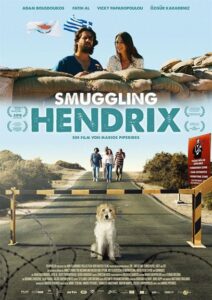
Image: The cover picture of film “Smuggling Hendrix”
Likewise, Cypriot film-makers have recently produced films that unfold the Cyprus problem from different angles. Akamas (2006) is about a Turkish Cypriot boy who has been taught that human beings have no differences between them, and then later realizes that the world is not as he imagined it to be. Fish’n’chips (2011) is a story about a Greek Cypriot immigrant returning to the island from London and his difficulties to come to terms with “recognizing” his own Turkish Cypriot father, and himself in Cyprus realities. The Story of the Green Line (2016) is about two soldiers, the Greek Cypriot Kypros and Turkish Cypriot Murat, who, in the late of 1970s, find themselves manning guard posts across one another on opposite sides of Nicosia’s Green Line. Finally, Smuggling Hendrix (2018) reminds us that there is/isn’t a “border” between conflict parties. These films are all eye-opening but hardly ever reach a domestic audience; I wasn’t able to find a single store selling DVDs of the abovementioned titles. I very much look forward to returning Cyprus again, although I have very little hope that anything will have changed by that time.
Author: Eiki Berg
NOTE: My trip to Cyprus was co-financed by the Research Council of Norway (Project No. 22890-1 “Dynamics of De Facto State Patron-client Relations”, 2020-2023) and UT Faculty of Social Sciences Development Fund. My special thanks go to Cypriot friends and colleagues who joined me in this learning exercise: Costas Constantinou, Nasia Hadjigeorgiou, Eleni Christodoulou, Constantinos Adamides, Maria Hajipavlou, Yiannis Papadakis, Nayia Kamenou, Iosif Kovras, Rebecca Bryant, Mete Hatay, Ahmet Sözen, Yücel Vural, İpek Borman, Yonca Özdemir, Dilek Latif, Hayriye Kahveci, Nur Köprülü, Sait Akşit and Direnç Kanol.


